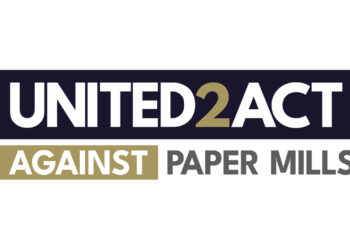For two decades, scholarly communication advocates and policy-makers have largely focused on price, value, and openness for research outputs. Universities, their libraries, and funders have achieved real results through tactics that have included public policy interventions and steadily increasing negotiating leverage and sophistication. Today, figures show a steady growth in the share of research globally that is published open access, with some geographic variance. To be sure, many universities, libraries, and funders do not believe that they have fully achieved their objectives. Even regions and funders that have achieved open access for a strong majority of their research outputs are generating a discourse about academy ownership or control of the scholarly record that would extend this focus towards new goals.
But the marketplace and policy environment have not remained static. In recent years, as the open access agenda has achieved so great an impact, the second digital transformation of scholarly publishing has suggested new focus areas are of real importance. And university leaders themselves, at least in North America, have a set of strategic priorities that are much broader than price, value, and openness of scholarship. Can advocates and policy-makers — from universities, academic libraries, and funding organizations — engage in a scholarly communication discourse that fully addresses these current and emerging focus areas and priorities?

Modern Scholarly Communication
In a recent Ithaka S+R report, sponsored by STM and several of its members, my colleagues Tracy Bergstrom, Oya Y. Rieger, and I found a considerable number of strategic imperatives and dilemmas for those concerned with scholarly communication. Here I highlight several examples where we need to see greater engagement — and a systematic approach — by universities, libraries, and funders:
- A number of different categories of services operate at the intersection of discovery, collaboration, and trust. These include platforms that generate tremendous amounts of user traffic, those that serve as key “switches” for discovery, and those that define the scope and bounds of the scholarly record. Some of these services are licensed by universities, but others are building business models that are less subject to the kinds of user protections that universities and their libraries have traditionally ensured. There is a great deal of strategic change, and potentially convergence and consolidation, coming in these categories. They are the services through which humans and machines will engage with scholarly content. Yet, universities and their libraries do not seem to have developed a strategic position on what they want out of this category of services and indeed may not yet have developed a coherent point of view.
- Publishers and start-ups alike have given real strategic focus to the atomization of the scholarly article, in which other elements such as datasets, code, registered hypotheses, methods, and protocols are separating from, and becoming complementary to, the version of record. While a number of individual scholarly disciplines are aware of both the opportunities and implications of atomization for their own field, there is little systematic engagement among funders or universities, both of which have a substantial interest in the structure of the scholarly record.
- In recent years, we have learned more about the extent to which the scholarly record is riddled with wrongdoing, including image manipulation, paper mills, and plagiarism. This is damaging directly to the research sector, and it is damaging indirectly because it reduces our ability to assert that science and other forms of expertise should be trusted. So much more is necessary in order to ensure the trustworthiness of the scholarly record. Until very recently, universities and publishers alike sought to avoid this topic and cast occasional scandals as exceptions. Today, they have an opportunity, as yet only potential, to join forces to detect and deter wrongdoing, brought together by their strong shared interest in ensuring that science and expertise are trusted by the general public and policy-makers alike.
University Strategy
At the same time, university leaders, at least in North America, have been most focused on opportunities to nurture and grow their scientific research enterprise. That was a key finding of an Ithaka S+R project that my colleagues Danielle Cooper, Cappy Hill, and I conducted several years ago with the Association of Research Libraries and the Canadian Association of Research Libraries. Many presidents, provosts, and similar leaders express support for open access, but their more common strategic imperative is for growth, particularly in the scientific research enterprise. With respect to this priority, many university leaders advocate for greater public support of government funding agencies to provide a greater pool of research dollars — while competing with fellow universities, in many cases more intensely than ever before, for a share of that research funding.
In response to this priority, several scientific publishers and infrastructure providers have developed tools to help universities identify funding and optimize their capacity to compete for it. These research information management and analytics tools are most commonly sold beyond the library to other parts of the university, including the provost’s office or the research office. Less common has been the development of tools that might help libraries strengthen their own offerings in support of scientific research and the growth of the scientific research enterprise.
Engagement
Much of the progress in price, value, and openness has been the product of the adversarial relationship between on the one hand libraries, funders, and advocates within academia and on the other hand publishers — operationalized through community advocacy, policy-making, and license negotiations. And we recognize in the Second Digital Transformation report that there is substantial advocacy, and also investment, for infrastructure that can disrupt the existing publishing incumbents; an adversarial approach is probably unavoidable for many of these disruptive efforts. Still, looking across the imperatives and dilemmas that are pressing today, for example the three highlighted in the bullets above, it is not clear that an adversarial approach will bear the same fruit. At least, there is a risk that without some form of greater engagement or cooperation, outcomes for areas of shared interest will be suboptimal.
Specifically, academia has an enormous stake in imperatives like ensuring the trustworthiness of the scholarly record, providing for the platforms through which humans and machines will engage with scholarship, and addressing the atomization of the scholarly article. These topics demand collaboration by academia and research publishers. The current investments in developing AI-powered tools that support scholarly communication — and in resisting some of the challenges posed by the use of AI — makes these kinds of partnerships only more important and urgent. But how can academia and publishers build the basis for stronger collaboration when so much of the relationship in recent decades has been adversarial? What does it look like to engage in a mindset of solving collective problems? Even while some interests continue to diverge?
There are a number of steps that those who believe in collective action can pursue. One opportunity is to think about how industry groups can serve more as venues for strategic engagement. For example, should the leaders of organizations like RLUK and ARL and those of organizations like SSP and STM, attend one another’s general meetings? Separately, can university, library, and publisher advocacy and lobbying groups align together on issues like advocating for greater funding for science and taking steps to ensure that science is more trustworthy and trusted?
Looking ahead, my colleagues and I at Ithaka S+R plan to organize a series of small summit meetings to bring together visionary leaders across the sector for focused conversation on common strategic imperatives. We will share takeaways from what we learn from these summits.
What other ideas do you have for how to strengthen collaboration? Please feel free to contribute suggestions to me directly or in the comments.
I thank Tracy Bergstrom, Kimberly Lutz, Mark McBride, and Dylan Ruediger for comments on a draft of this piece.
Discussion
1 Thought on "Are Price, Value, and Openness the Most Important Scholarly Communication Priorities?"
Nice overview of your recent and upcoming efforts, Roger. I’m very glad the trustworthiness of the scholarly record is prioritized. If we fail there, how much will the rest of it even matter? I think collaborative relationships also deserve credit for the progress in price, value, and openness. The work is not all adversarial. The conflicts just get more coverage.



